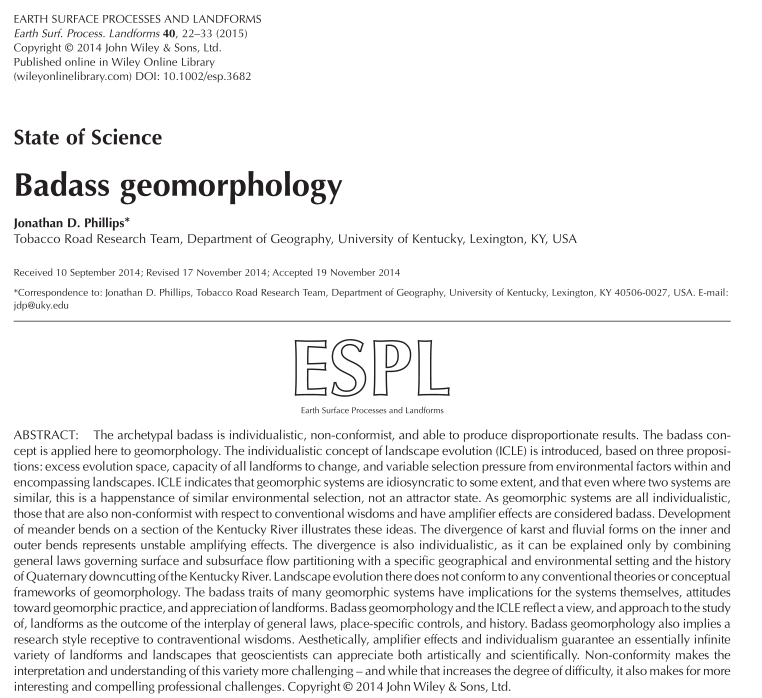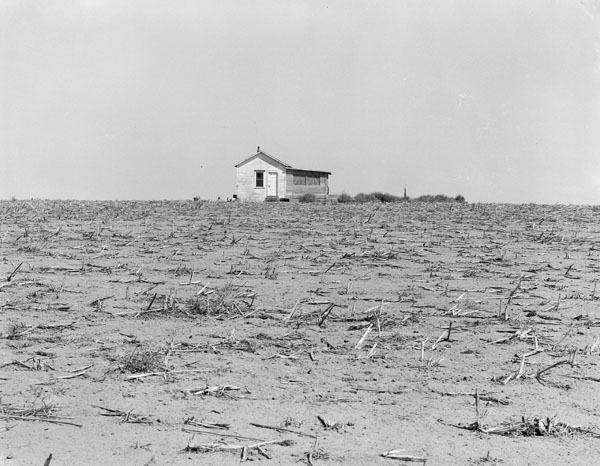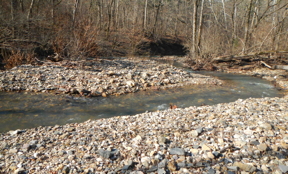THE CYCLE OF EROSION
Out on the trails of Shaker Village at Pleasant Hill, Kentucky, this morning, I got to thinking about William Morris Davis’ “cycle of erosion” conceptual model (also called the geographical or geomorphological cycle). The drive-by, oversimplified version is that landscape evolution starts with uplift of a more-or-less planar, low relief surface. Weathering and erosion goes to work, and results in an initial stage of increasing relief as streams carve valleys, and slope processes operate on the slopes thereby created. Eventually, however, as the streams begin to approach base level, a new stage of decreasing relief begins as hilltops and drainage divides are lowered and valleys infilled. This continues until the entire landscape is about as close to baselevel as the geophysics of mass transport will allow, creating a low-relief, almost-planar surface called a peneplain. At some point a new episode of uplift occurs and the cycle begins anew.
I was thinking of this because many landscapes in the world, like the one I was viewing this morning, do give the impression of a dissected plateau or a low-relief surface into which denudational processes have cut.




